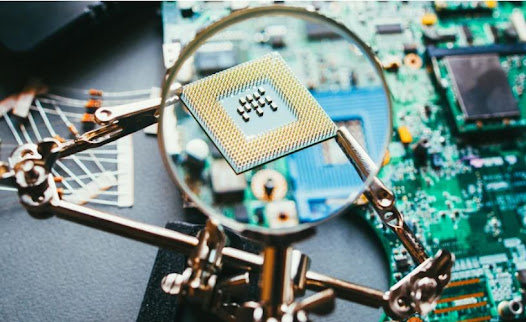Basic Components of PCB Materials
PCBs are composed of several layers, each playing a crucial role in the board's functionality. The substrate, or base material, provides the mechanical support. It's typically made from a dielectric material that insulates the various layers. The copper cladding forms the conductive pathways, and the solder mask protects the copper from oxidation and prevents solder bridging during assembly.Material Properties
Key properties influencing material selection include:
- Dielectric Constant (Dk): This measures the material's ability to store electrical energy, affecting signal propagation speed.
- Thermal Conductivity: Determines how well the material can dissipate heat, crucial for thermal management.
- Glass Transition Temperature (Tg): The temperature at which the substrate transitions from rigid to a more pliable state, important for thermal stability.
In the next sections, we'll delve into the types of PCB materials available, factors to consider for selection, practical case studies, and conclude with best practices.
Types of PCB Materials
FR-4: The Industry Standard
FR-4 is the most commonly used material in PCB manufacturing, valued for its balance of cost, performance, and durability. It consists of a woven fiberglass cloth impregnated with an epoxy resin binder. FR-4's popularity stems from its adequate electrical properties, good mechanical strength, and excellent flame resistance. However, its dielectric constant can vary with frequency, and it may not be the best choice for high-speed or high-frequency applications due to its moderate dielectric loss.
High-Speed Materials for Advanced Applications
For applications requiring high-frequency performance, such as telecommunications or advanced computing, materials with better electrical properties than FR-4 are necessary. High-speed PCB materials, like Rogers or Teflon, offer lower dielectric losses and a more stable dielectric constant over a range of frequencies. These materials are essential for minimizing signal degradation in high-speed circuits. While they offer superior performance, their cost is significantly higher than FR-4, and they can be more challenging to work with during the PCB manufacturing process.
Flexible PCB Materials: Adapting to New Design Paradigms
Flexible PCBs have gained popularity for their ability to fit into unconventional shapes and their durability in dynamic applications. Materials like polyimide allow these PCBs to flex and bend, opening new possibilities for electronics design. Flexible materials must withstand repeated bending and stretching while maintaining electrical integrity, a stark contrast to the rigid materials used in traditional PCBs.
Aluminum and Metal-Clad PCBs: Masters of Heat Dissipation
In power electronics and LED applications, managing heat is a critical concern. Aluminum-backed and metal-clad PCB materials excel in thermal conductivity, allowing for efficient heat dissipation. These materials can significantly extend the life of components subjected to high thermal loads. While they are excellent for thermal management, their electrical insulation capabilities and mechanical properties must also be carefully considered in the design process.
Comparative Overview
A table or chart summarizing these materials would typically illustrate differences in dielectric constant, thermal conductivity, flexibility, and typical applications, providing a quick reference for designers.
Factors to Consider in Material Selection
Application Requirements: The Deciding Factor
The nature of the electronic device dictates the material choice. High-frequency applications may necessitate materials with a stable dielectric constant, while power electronics require materials with excellent thermal conductivity. Mechanical requirements, such as flexibility or strength, also play a crucial role in material selection.
Cost Considerations: Balancing Budget and Performance
While high-performance materials offer better properties, they come at a higher cost. Designers must balance the material benefits against the overall budget, often making trade-offs to achieve an optimal balance between cost and performance.
Environmental Compliance: Meeting Global Standards
Materials must comply with environmental regulations like RoHS and REACH. Selecting materials that meet these standards is crucial for global market access and environmental responsibility.
Availability and Manufacturability: Ensuring Feasibility
The chosen material must be readily available and compatible with standard manufacturing processes. Some high-performance materials may require specialized handling or processing, impacting the overall project timeline and cost.
Case Studies and Examples
Real-World Application Insights
By examining how different industries employ various PCB materials, designers can gain valuable insights. For example, a case study in the aerospace industry might illustrate the use of high-speed materials to ensure signal integrity in harsh environments. Another example could highlight how consumer electronics manufacturers leverage the cost-effectiveness and reliability of FR-4 for mass-produced devices.
Conclusion
Selecting the right PCB material is a multifaceted decision that significantly impacts the performance, durability, and cost of electronic devices. Designers must carefully consider the electrical, thermal, and mechanical properties of materials, along with cost, compliance, and advanced circuits manufacturing constraints. By understanding the nuances of each material and aligning them with the project's requirements, engineers can ensure the longevity and success of their electronic products.








